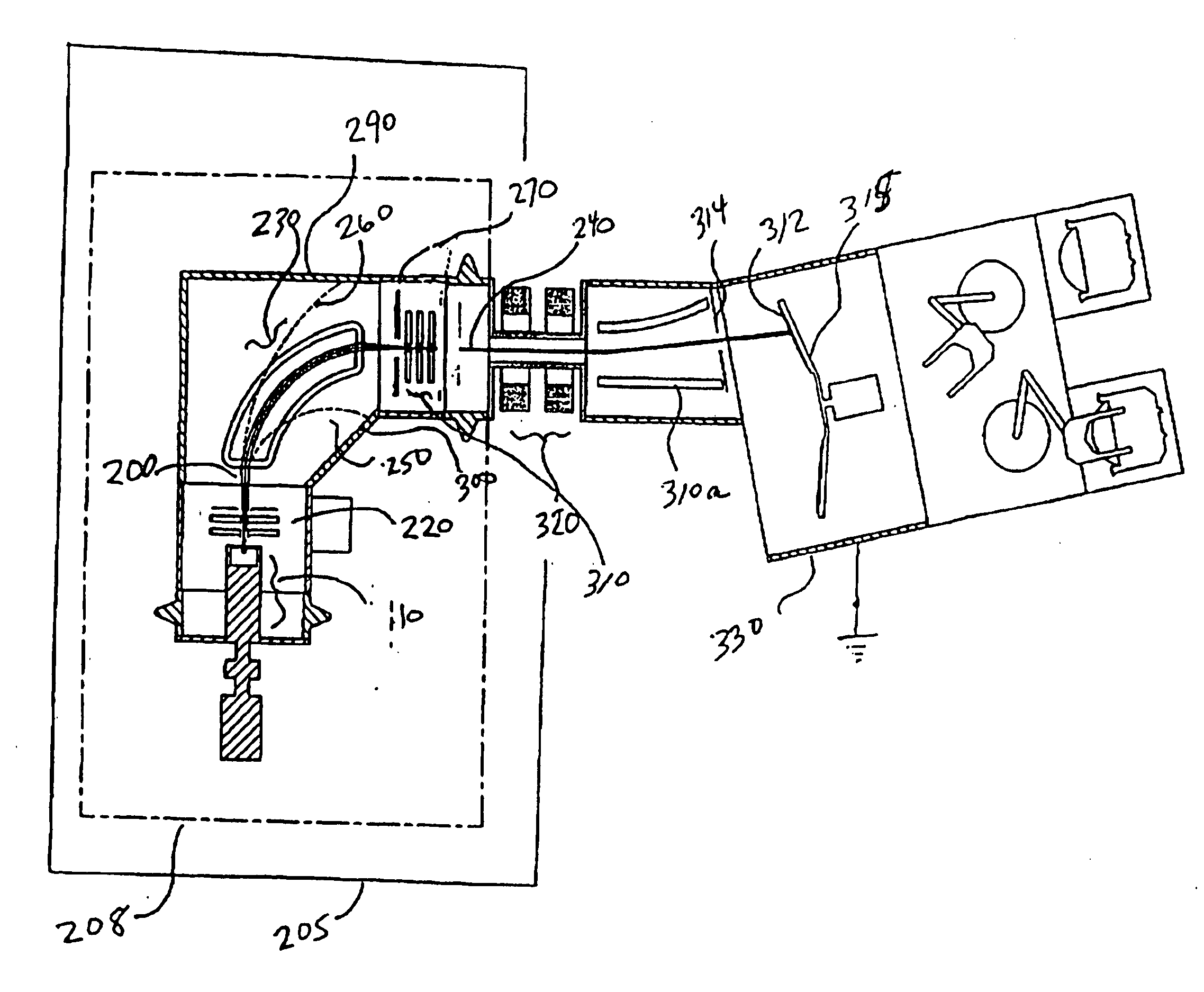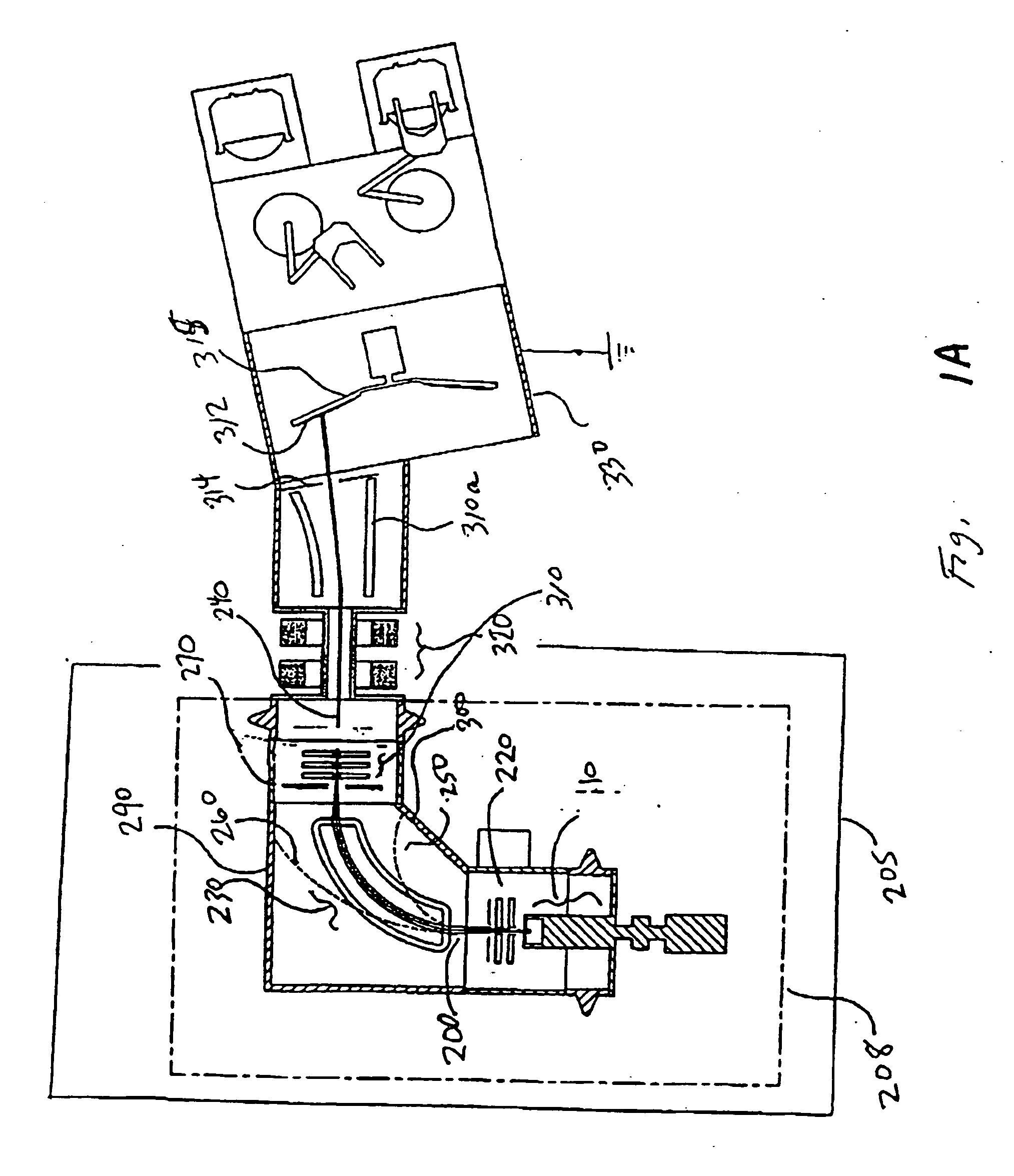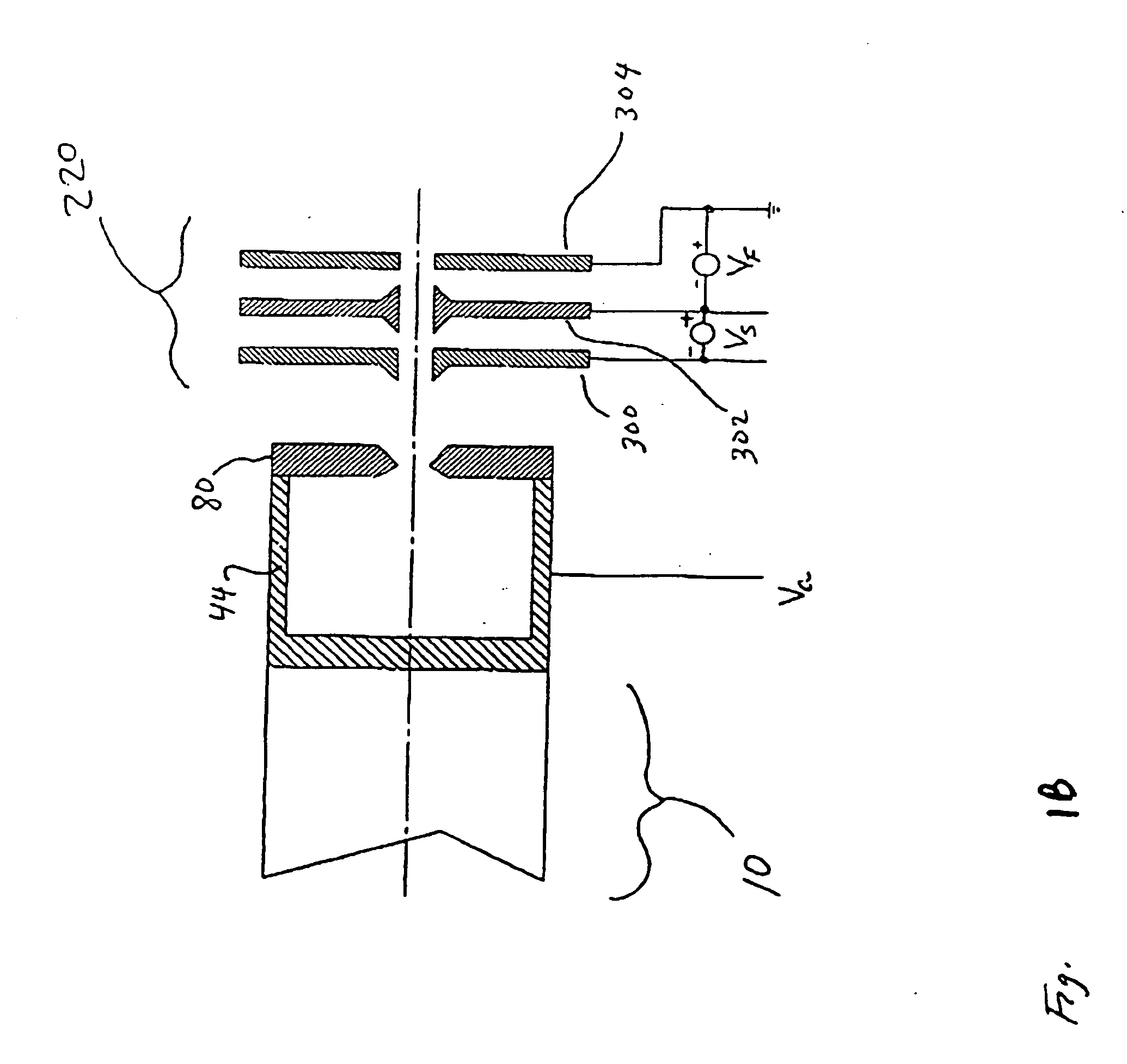Ion implantation device and a method of semiconductor manufacturing by the implantation of boron hydride cluster ions
a cluster ion and ion implantation technology, which is applied in the field of semiconductor manufacturing, can solve the problems of increasing the dispersion of the ion beam, limiting the conventional ion implantation system at low beam energy, and affecting the transport of the low-energy beam, so as to achieve high productivity
- Summary
- Abstract
- Description
- Claims
- Application Information
AI Technical Summary
Benefits of technology
Problems solved by technology
Method used
Image
Examples
Embodiment Construction
[0068] Cluster Ion Implantation System
[0069]FIG. 1A is a schematic diagram of a cluster ion implantation system of the high current type in accordance with the present invention. Configurations other than that shown in FIG. 1A are possible. In general, the electrostatic optics of ion implanters employ slots (apertures displaying a large aspect ratio in one dimension) embedded in electrically conductive plates held at different potentials, which tend to produce ribbon beams, i.e., beams which are extended in one dimension. This approach has proven effective in reducing space-charge forces, and simplifies the ion optics by allowing the separation of focusing elements in the dispersive (short axis) and non-dispersive (long axis) directions. The cluster ion source 10 of the present invention is coupled with an extraction electrode 220 to create an ion beam 200 which contains cluster ions, such as B18Hx+ or As4+. The ions are extracted from an elongated slot in ion source 10, called the...
PUM
 Login to View More
Login to View More Abstract
Description
Claims
Application Information
 Login to View More
Login to View More - R&D
- Intellectual Property
- Life Sciences
- Materials
- Tech Scout
- Unparalleled Data Quality
- Higher Quality Content
- 60% Fewer Hallucinations
Browse by: Latest US Patents, China's latest patents, Technical Efficacy Thesaurus, Application Domain, Technology Topic, Popular Technical Reports.
© 2025 PatSnap. All rights reserved.Legal|Privacy policy|Modern Slavery Act Transparency Statement|Sitemap|About US| Contact US: help@patsnap.com



